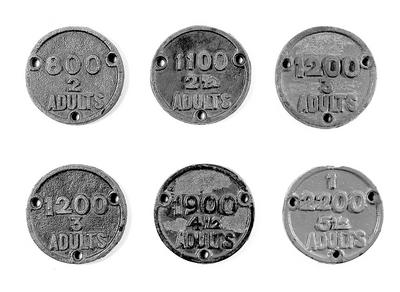
Metal tickets from "ticketed houses", c 1900. Each disc is 3 inches in diameter and was attached to the door of a flat to record the area of space within (in cubic feet) and the number of adults it was legally permitted to accommodate. Young children were recorded as half-adults.
Ticketing was introduced by the City Improvement Act of 1866 as a means of preventing the chronic overcrowding that blighted many of the city's worst slum areas. All small houses of three apartments or less were measured to determine the number of people who could live there in relative comfort and safety, and a ticket was attached to the door indicating the size of the house and the occupancy limit. The city's sanitary inspectors were empowered to visit at any time of the day or night to check that the limit was not exceeded.
There were reported to be more than 23,000 ticketed houses in the city during the 1880s, occupied by nearly 15 per cent of the total population.
Reference: 670.78.137
Reproduced with the permission of Glasgow City Council, Glasgow Museums
Keywords:
Glasgow Improvement Act, housing regulations, lodgers, lodging houses, overcrowding, public health regulations, sanitary inspectors, slums, ticketed houses, tickets
You have 0 images in your photo album.